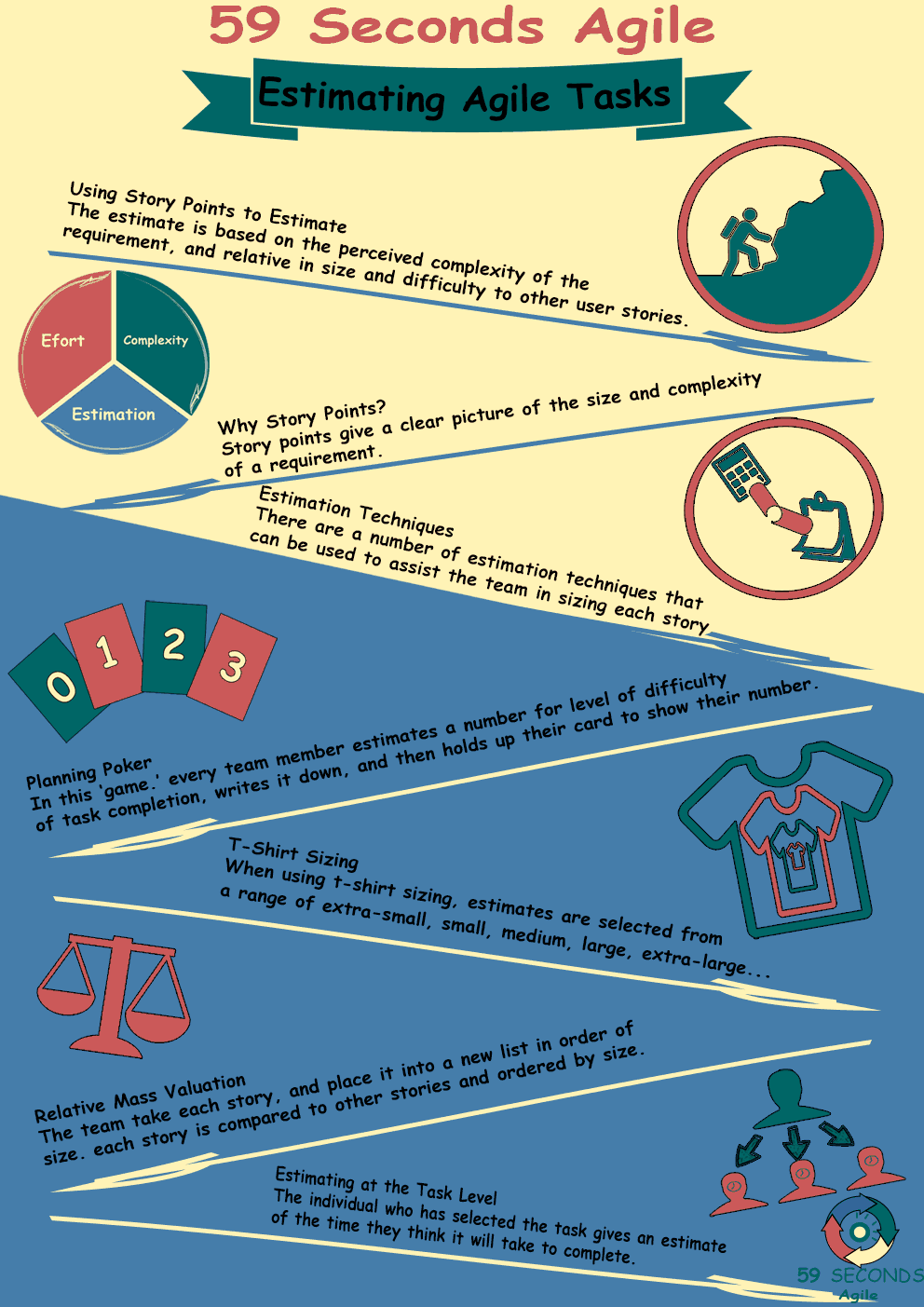Estimating Techniques
A 59 Seconds Agile Training Video
Continue to Part 9 Below
Estimating Techniques in Scrum
A 59 Seconds Agile Article
This article provides an ‘Introduction into Estimating Techniques’ and looks to discuss the different approaches to estimation and the benefits of each approach.
Estimating Games
It is always important to remember that this is an estimate. 100% accuracy is not possible, nor is it required. Just enough thought and effort should be applied by the team to get an estimate for each user story. There will be some over and underestimates, but overall, they will tend to cancel each other out.
The cards for planning poker can use various sets of values, ranging from 1,2,3, 4 and 5,, known as the ‘fist of five’ to a Fibonacci sequence, where the next number in the sequence is the sum of the previous two numbers, or 1,2,3,5,8, and so on.
It is recommended that only a short sequence of numbers is available, so that the choice is limited. Some teams use larger numbers, say, 50, 100, 150, and 200, but the aim is to minimize the choices available. For example, a similar estimation technique is based on T-shirt sizes, such as Small, Medium ,Large and extra-large.
Using this option, it takes only moments to select the correct “size”. Where a team member is struggling to make a choice, they can use previously estimated stories as a yardstick, for instance:
“is this user story harder or easier than user story 3, which we gave a score of 5 story points”.
Continue Reading —> Next
Estimating Techniques
A 59 Seconds Agile Video Animation
Continue Reading —> Next
User Stories Applied
A 59 Seconds Agile Book Review
User Stories Applied by Mike Cohn is one of our favourite books on Agile User Stories. The book starts with an overview into user stories, and details what a user story is and the different aspects of them. He then discusses how to go about writing a user story, and provides details of the INVEST criteria that can be used to determine if the story is meeting all of its objectives. Next Mike gives an in depth discussion of who user stories are written for and where to begin when gathering the details for them. The book then discusses acceptance testing user stories, including how to go about specifying these criteria and the responsibilities of the development team and customers during this process.
Continue Reading —> Next
Estimating Techniques
A 59 Seconds Agile Infographic

Continue Reading —> Next
Agile Scrum Master Training Course
Our Favourite Agile Books
We found these books great for finding out more information on Agile Scrum:
Continue Reading —> Next


